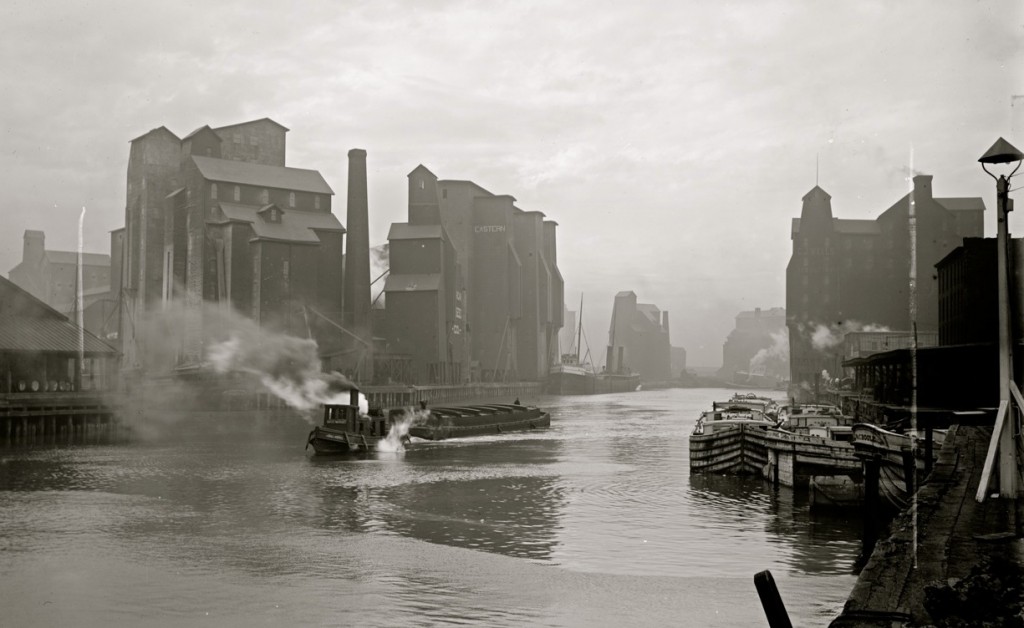Chances are, if you had cereal for breakfast this morning, or toast, or crackers for a snack (the list goes on) you can thank Buffalo for your meal.
The grain elevator, that mighty cement tower that transformed the way grains were stored, sorted and handled in production, was invented here. The elevator was invented by merchant Joseph Dart and engineer Robert Dunbar in 1842. The duo invented the necessary marine leg, which would scoop loose grain from ships and raise it to the top of the elevator for sorting. Their invention amended the steam-powered flour mills invented by Oliver Evans. With the success of the Erie Canal, which opened about 20 years earlier, the grain elevators would be a central economic tool on Buffalo’s waterways.
Today, Buffalo’s grain elevators have mostly become relics of its industrial past. Though General Mills remains in operation, many of the manufacturing corridor’s grain elevators have been abandoned. In recent years, public projects have given way to renewal. Public art and recreation have breathed new life into these structures, between light installations, art exhibits, and even a proposed rock climbing wall. In 2013, they hold the vision of those preservationists who want to pursue new projects in the shadow of the city’s history.
Image courtesy Buffalo History Gazette.
Read more about Buffalo’s grain elevator legacy.

